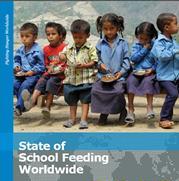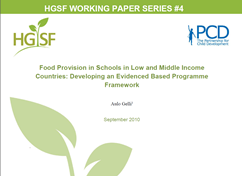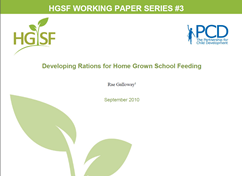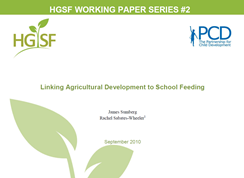Wednesday, 19 June 2013 15:41
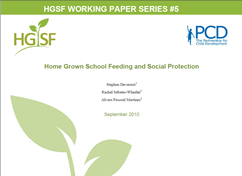 The main objectives of school feeding are conventionally stated in terms of child nutritional and education outcomes. The original purpose of feeding children at school was to protect them against the worst consequences of household food insecurity, and as such it can be viewed as a classic ‘social safety net’. However, the recognition that school feeding also achieves positive educational outcomes shifted the agenda beyond simply providing a consumption safety net, towards a more holistic ‘social protection’ plus ‘livelihood promotion’ function, given that educational outcomes build resilience and livelihood opportunities for the future.
The main objectives of school feeding are conventionally stated in terms of child nutritional and education outcomes. The original purpose of feeding children at school was to protect them against the worst consequences of household food insecurity, and as such it can be viewed as a classic ‘social safety net’. However, the recognition that school feeding also achieves positive educational outcomes shifted the agenda beyond simply providing a consumption safety net, towards a more holistic ‘social protection’ plus ‘livelihood promotion’ function, given that educational outcomes build resilience and livelihood opportunities for the future.
Recently the school feeding discourse has shifted again, this time to ‘home-grown’ school feeding, reflecting the recent convergence in policy debates between agricultural and social protection policies, especially in Africa.
Read more: HGSF Working Paper Series #5 Home Grown School Feeding and Social Protection




